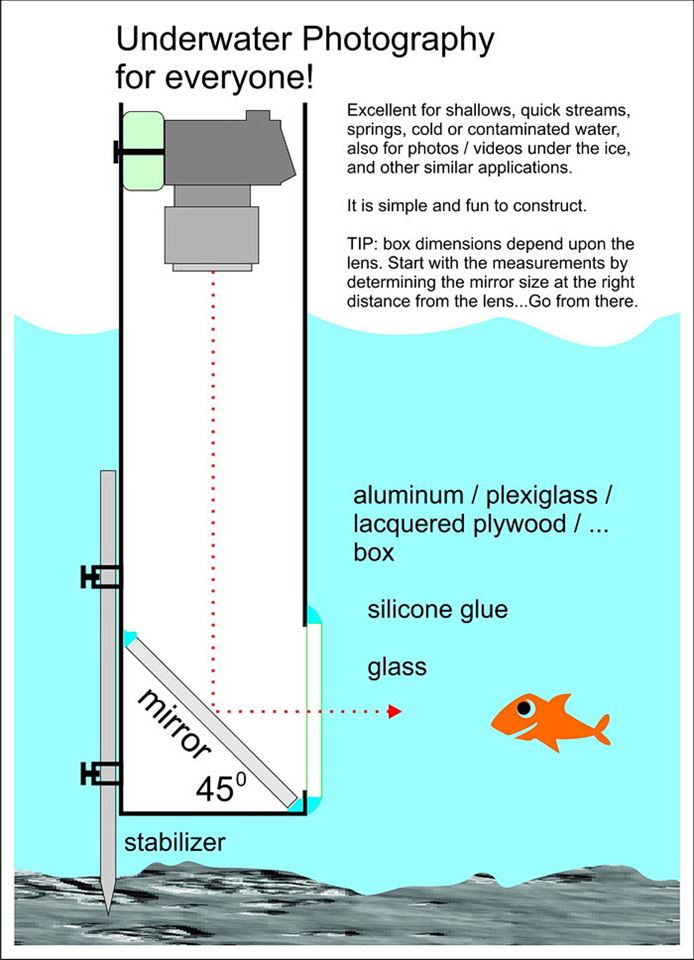| |
Let's call it SubScope, the "below-looker", as opposed to "above-looker" or PeriScope.
It follows the same principle, though. Using prisms and/or mirrors, the light is bent through the tube so as to transfer the point of view. There are more sophisticated means to do this, of course, but none is so simple and easy to make as the one in the picture below.
As the picture is worth a 1000 words, the sketch should be enough. There are many sources where one can find already adequate pieces, and all that is needed is putting them together with little adaptation.
Industry of today sure does wonders, but Do-It-Yourself has always been our most faithful friend. So if you would care to follow the suggestion, you can then take photos from most unusual, normally hard to access places - and not only underwater!
Oh, and don't let me stop you from bettering the basic idea within the drawing. It is only here to show you the principle. You might well want to think about some other ways to do it, and there are many ways...
... like building an aluminum L-profile skeleton inside a kind of watertight "sock" or bag...
... or adding an extensible tube over the camera position (against waves and/or spray)...
... or making the construct entirely collapsible, for easier carrying...

There are many ways to create a temporary "hole in the water", so as to be able to look under the surface! The fixed positions of camera, the mirror and the viewport are about the only things that have to remain constant, and of course, the glass viewport should be as close to the mirror as possible, but all else can be arranged as you wish.
Enjoy!
Copyright © TravelDailyLife.com
|